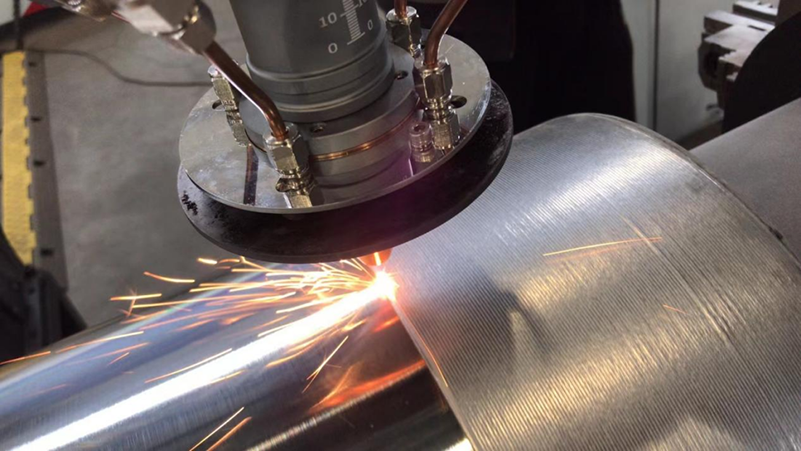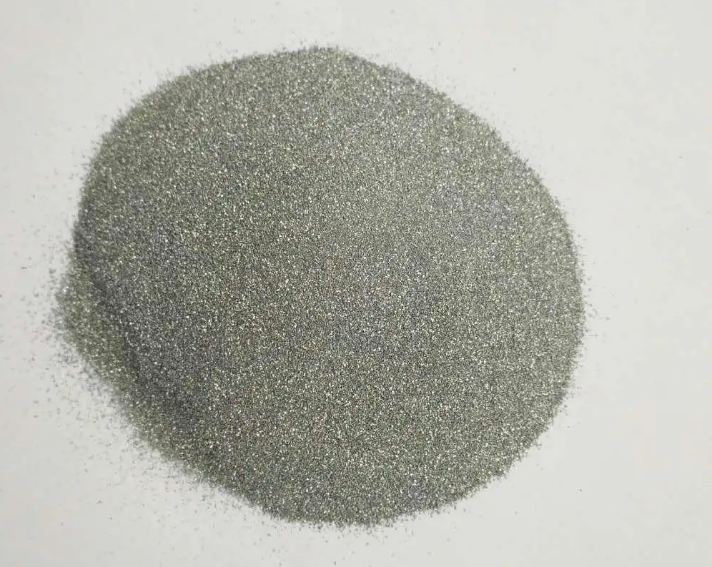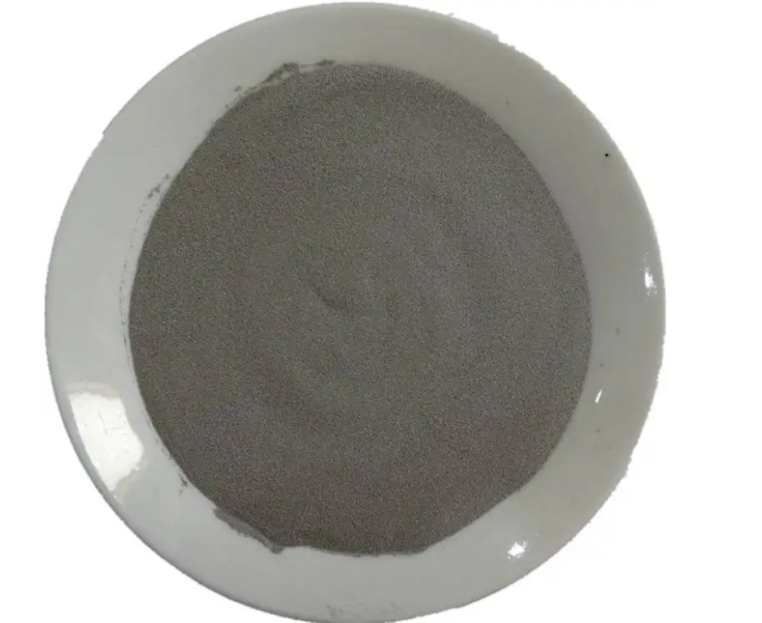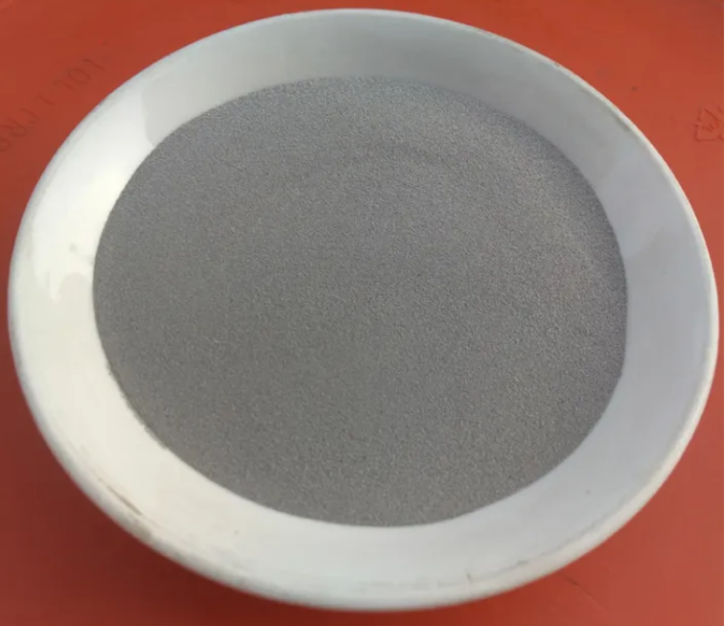Laser cladding technology is a process in which selected coating alloy powders are placed on the surface of the substrate using various filler methods and irradiated with high-energy laser beams to act on the substrate’s surface and rapidly melt, expand, and solidify. The covering layer is then created in conjunction with the underlying material. This freshly created covering layer has the potential to greatly improve or even recreate the underlying material’s wear resistance, heat resistance, corrosion resistance, oxidation resistance, and other desired qualities.
Haitian provides a variety of laser cladding powders, including tungsten carbide, nickel-based alloys, cobalt-based alloys, and iron-based alloys.
Laser cladding technology is a complicated physical, chemical, and metallurgical process, and the laser parameters have a higher influence on the quality of the cladding layer. Furthermore, the choice of alloy powder is critical. According to the material composition, laser cladding alloy powder is classified as self-fluxing alloy powder, composite powder, or ceramic powder. Among these, self-fluxing alloy powder has received the greatest attention and practical use.


Self-Fluxing Alloy Powder
Iron-based (Fe), nickel-based (Ni), and cobalt-based (Co) alloy powder are the three types of self-fluxing alloy powder. Because it includes boron (B) and silicon (Si), it possesses self-deoxidation and slagging characteristics. High chromium is also present, which preferentially melts with the oxygen in the alloy powder and the oxide on the workpiece’s surface to form low-melting-point borosilicate, etc., covering the surface of the molten pool to prevent excessive oxidation of the liquid metal and thus improving the melt’s performance. The base metal’s wetting ability may minimize inclusions and oxygen content in the cladding layer, as well as improve the cladding layer’s process forming performance, resulting in outstanding corrosion and oxidation resistance.
It is adaptable to carbon steel, stainless steel, alloy steel, cast steel, and other base materials, resulting in a cladding layer with low oxide content and low porosity. However, due to the presence of sulfur, a brittle phase with a low melting point is quickly generated at the interface of sulfur-containing steel, making the coating easy to peel off, therefore it should be chosen with caution.
Nickel Based Alloy Powders


Nickel (Ni) is a glossy, silvery-white metal with relatively low electrical and thermal conductivities, hardness and toughness at high temperatures, the ability to be magnetized, and is readily formed into thin wires and flat sheets. Alloys use more than 80% of nickel output. Nickel, when alloyed with other elements, gives hardness, strength, corrosion resistance, and different electrical, magnetic, and heat resistant qualities.
Applications
Our range of nickel based laser cladding powders are formulated for applications with the below requirements;
• Excellent corrosion resistance in wide range of environments.
• High temperature oxidation resistance
• Resistance to stress corrosion cracking
• Good wear resistance and high ductility.
• Typically used for repair and surfacing of similar nickel based super alloys, non-alloyed, low alloyed and high alloyed steels.
• Repair and restoration of superalloy components, including gas turbine and air frame parts.
• Additive manufacturing via laser sintering
• Excellent corrosion resistance in hot contaminated mineral acids, chlorine and chloride contaminated media.
• Resistance to strong oxidisers and wet chlorine gases, resistant to pitting, crevice corrosion and stress corrosion cracking.
Cobalt Based Alloy Powders


Cobalt (“Co”) is a shiny, hard metal with low thermal and electrical conductivity. Cobalt and cobalt products’ distinctive qualities are responsible for their wide range of uses in energy storage, industrial, and other fields. These qualities include (i) a high energy density, (ii) the capacity to alloy and impart strength at high temperatures, and (iii) ferromagnetic properties.
The second-largest cobalt consuming market is metallurgical cobalt, which is used to make superalloys. Superalloys are heat resistant, surface stable, corrosion and oxidation resistant materials made from cobalt and other metals such as nickel and/or iron. Cobalt superalloys are widely employed in aerospace, power generation, aviation, medical, automotive, industrial gas turbines, and military applications.
Applications
• Corrosion resistance
• Oxidation resistance
• Abrasive wear resistance
• High service temperature capability
• Coatings exhibit a low coefficient of friction particularly suitable where lubrication is low or nonexistent.
• High resistance galling
Iron Based Alloy Powders


Iron Based Alloy Powders is appropriate for components that require local wear resistance and are easily bent. The matrix is mostly made of cast iron and low carbon steel. Its main benefits are its many material sources, low cost, and high wear resistance. The downsides are a high melting point, low oxidation resistance, and cracking and holes in the cladding layer. The hardness of the coating is adjusted in the composition of iron-based alloy powder by adjusting the content of alloy elements, and the hardness, cracking sensitivity, and content of retained austenite of the cladding layer are improved by adding other elements, thereby improving the cladding layer’s resistance.
In sum, we rely on iron (as steel) to manufacture practically everything we need to live in the twenty-first century. Today, we utilize twenty times more iron (in the form of steel) than we did twenty years ago.
Applications
Our range of iron based laser cladding powders are formulated for applications with the below requirements;
• Corrosion, pitting and cavitation resistance.
• Resistance to creep and stress rupture at elevated temperatures
• Repair or buildup of steel parts
• Corrosion overlay deposits on components used in the oil, gas and marine industries.
• Dimensional control
• Strong metallurgic bonding
• Minimized risk for porosity and cracking
• Wear resistance
• Excellent cladding properties
• Good machinability
• Excellent welding properties with nice and smooth deposit
• Homogenous hardness within deposition layers
• Exceptional impact and abrasive wear properties
Composite powder
A powder system generated by combining or compounding different high melting point hard ceramic materials such as carbides, nitrides, borides, oxides, and silicides with metals is referred to as composite powder. Composite powder can be used with laser cladding technology to create ceramic particle-reinforced metal-based composite coatings that organically combine metal’s toughness and processability with ceramic materials’ excellent wear resistance, corrosion resistance, high temperature resistance, and oxidation resistance.
To some extent, it can shield carbides from oxidation and breakdown, resulting in a coating with good wear resistance and hardness. This is a hotspot in the present field of laser cladding technology research and development.
Tungsten Carbide Powder


Tungsten (W) and its alloys are among the toughest metals. Tungsten has the greatest melting point of any pure metal, making it valuable for a wide range of commercial and industrial uses. The most common application for tungsten is in cemented carbides, often known as hard metals, which have a hardness similar to diamond and are suitable for use in cutting applications and wear-resistant materials.
Tungsten carbides are largely utilized in metalworking, mining, oil drilling, and building. Tungsten and its alloys are employed in electrodes, filaments (light bulbs), cables, welding, and as components in the electrical, heating, and lighting industries, as well as in the aviation sector.
Applications
• Construction equipment wear plates
• Agricultural machines.
• Oil and gas tool joints, PDC and steel body drill bits
• Biomass and wood processing knives and cutters
• Mining equipment crushers and milling rolls
• Heavy equipment mixer blades, decanters or extruder screws
• Down hole tools such as stabilizers and drill collars
• Slurry pump impellers
• Conveyor screws used for manufacturing of plastics
Ceramic Powder
Ceramic powders primarily consist of silicide ceramic powders and oxide ceramic powders, the most common of which are oxide ceramic powders (alumina and zirconia). Because zirconia ceramic powder has lower thermal conductivity and greater thermal shock resistance than alumina ceramic powder, it is frequently utilized to make thermal barrier coatings. Ceramic powder is frequently used to make high temperature wear and corrosion resistant coatings due to its outstanding wear resistance, corrosion resistance, high temperature resistance, and oxidation resistance.
Bioceramic materials are now a prominent research area.
Current laser cladding bioceramic material research focuses mostly on hydroxyapatite (HAP), fluoroapatite, and bioceramic materials including Ca and Pr that are laser cladded on metal surfaces such as Ti-based alloys and stainless steel. Hydroxyapatite bioceramics have excellent biocompatibility and have long been regarded as human teeth by relevant researchers both at home and abroad. In general, despite the fact that research on laser cladding bioceramic materials began late, it has progressed swiftly and is a promising research path.
More Laser Cladding Powder
| PRODUCT | BASE MATERIAL | DESCRIPTION | HARDNESS |
|---|---|---|---|
| L 304L | Iron | A STAINLESS STEEL ALLOY WITH C, Si, Mn, Cr, AND Ni THAT PROVIDES GOOD RESISTANCE TO INTERGRANULAR CORROSION AFTER WELDING OR STRESS RELIEVING. To be used in the repair of parts and equipment that have been exposed to organic and fruit-acid components created by welding and cannot be annealed. | 160 HV |
| L 309L | Iron | A STAINLESS STEEL ALLOY WITH EXCELLENT CORROSION RESISTANCE AND ESPECIALLY HIGH INTERGRANULAR CORROSION RESISTANCE AFTER WELDING. Because of the high chromium and nickel content, it resists damaging thermal scaling up to 1080°C. For use in heat-resistant applications like as marine engine components, among others. | 200 HV |
| L 316L | Iron | A STAINLESS STEEL ALLOY WITH C, Si, Cr, Ni, Mo, AND Mn OVERLAYS THAT PROVIDE EXCELLENT CORROSION RESISTANCE. Surface protection against fretting, cavitation, and particle erosion is excellent. Use in general corrosion resistant conditions, machine element maintenance and build-up, and so on. | 180 HRC |
| L 410L | Iron | A STAINLESS STEEL ALLOY COMPRISING C, Si, Cr, Ni, Mo, AND Mn. Excellent resistance to particle erosion and fretting at low temperatures. This alloy produces a machinable wear-resistant coating. Use for general corrosion and abrasion resistant applications such as structural components on water and steam, and so on. | 230 HRC |
| L 420S | Iron | A DIMENSIONAL RESTORATION SPECIALLY FORMULATED MEDIUM HARDNESS CHROME STEEL ALLOY. Overlays provide strong hardness and mild abrasion resistance. A martensitic stainless steel alloy with good build up and weldability qualities. Applications for shafts, rods, sleeves, and rollers, among other things. | 54 HRC |
| L 431L | Iron | DIMENSIONAL RESTORATION WITH A TOUGH MARTENSITIC STAINLESS STEEL ALLOY. Excellent corrosion resistance and hardness. great weldability and build up qualities make this material a great candidate for dimension restoration. Applications include shafts, rods, sleeves, and rollers, among others. | 50 HRC |
| L 59 CR | Iron | IRON-BASED MATERIAL WITH HIGH HARDNESS AND CORROSION RESISTANCE. Weld overlays that are devoid of cracks and porosity. Excellent machinability. Primarily used for dimension restoration on cylinder rods and components used in the mining, construction, and maritime sectors. | 40 HRC |
| L 32 Ni | Nickel | B, Si, AND SYNERGISTIC ELEMENTS IN A PROPRIETARY NICKEL BASE ALLOY FOR USE ON CAST IRON BASE METALS. Excellent ductility and machinability. Excellent wear resistance in high temperatures. Overlay over aluminum bronze substrates is also possible. Glass mould manufacture uses baffles, bottom plates, and blow heads. | 47 HRC |
| L 38 Ni | Nickel | CHROMIUM-FREE NICKEL BASE ALLOY FOR STEEL AND CAST IRON RESURFACING. Alloy matrix with good machinability and low coefficient of friction. When used with tungsten carbide to boost abrasion resistance, there are very few cross checks. Applications include shafts, liners, pump sleeves, and as a buffer layer prior to hard surface, among other things. | 47 HRC |
| L 40 Ni | Nickel | ALLOY WITH C, Si, B, Fe, AND Cr ON A NICKEL BASE. Coatings with high abrasion resistance on heat treatable base metal. At high temperatures, it has excellent corrosion, oxidation, and metal-to-metal wear resistance qualities. Used for valve seats, valve spindles, bearing journals, shafts, gears, and cams, among other things. | 50 HRC |
| L 50 Ni | Nickel | ALLOY WITH C, Si, B, Cr, AND Fe ON A HARD NICKEL BASE. Overlays that are durable, abrasion resistant, and wear resistant. Good ductility and fracture resistance. The maximum service temperature is 550°C. Paper bed knives, pump blades, dies, shafts, and valve seats are just a few examples of applications. | 60 HRC |
| L 55 Ni | Nickel | C, Si, B, Cr, Mo, Cu, AND Fe ARE CONTAINED IN THIS HIGH HARDNESS NICKEL BASE ALLOY. Because of the presence of Mo-Cu components, it creates hard thick coatings with a mix of toughness and high abrasion and corrosion resistance. Crushing tools, extrusion screws, pump sleeves, and heat treatment rollers are examples of applications. | 65 HRC |
| L 60 Ni | Nickel | A NICKEL BASE ALLOY WITH HIGH HARDNESS CONTAINING C, SI, B, Fe, AND Cr. Designed to be as hard as possible. Abrasion resistance is high, while the coefficient of friction is low. Because of its great hardness, a thin overlay layer is suggested. Screw flights, wear rings, brick dies, diesel engine valves and pump shafts, and so forth. | 68 HRC |
| L 625 | Nickel | A SUPER ALLOY WITH A NICKEL BASE CONTAINING C, Si, Fe, Cr, Mo, AND Nb. Designed to withstand acidic environments and oxidation. Typically utilized when corrosion resistance in sea water, chemical, acidic environments, and oxidation is necessary. Applications include ship engine parts, combustion systems, and chemical processing components, among others. | 28 HRC |
| L 718 | Nickel | A SUPER ALLOY WITH A NICKEL BASE FOR WEAR AND CORROSION PROTECTION. At extreme temperatures, there is an excellent mix of oxidation, erosive, and hot gas corrosive wear. Ship engine parts, valve components, chemical processing equipment, pump parts, and oil and gas exploration components, to name a few. | 26 HRC |
| L C276 | Nickel | A SPECIAL ALLOY FOR CORROSION RESISTANCE AGAINST AGRESSIVE MEDIA. Excellent metal-to-metal wear at high temperatures. This alloy offers the chemical processing sector the largest variety of process environment possibilities. Resistance to localized chemical assault is exceptional. Applications include shafts, dies, blades, and rollers, among others. | 24 HRC |
| L Ni30Cu | Nickel | A SPECIAL ALLOY FOR PROTECTING WEAR FROM OXIDATION AND SEA WATER CORROSION. Resistance to reducing and moderately oxidizing corrosives is excellent. This alloy has good corrosion resistance, particularly against seawater corrosion. Applications include shafts, sleeves, blades, liners, and rotors, among others. | 24 HRC |
Summary
varying cladding materials have vastly varying qualities, costs, and post-cladding attributes. In practice, alloy powders with varying characteristics can be used to meet various processing needs. A high-performance alloy surface may be formed on a cheap metal substrate by cladding alloy powder on the surface of the workpiece with laser (laser cladding), thereby cutting manufacturing costs and preserving expensive and rare metal resources.
When compared to traditional surface treatment technologies such as surfacing, thermal spraying, and electroplating, laser cladding has the following advantages: low dilution, dense structure, good coating/substrate combination, a wide range of cladding materials, large changes in particle size and content, and high processing quality. It has the benefit of strong controllability (can realize three-dimensional automatic processing).
It is now utilized mostly in material surface modification (such as hydraulic columns, rollers, gears, gas turbine blades, and so on) and product surface repair (such as rotors, molds, bearing inner holes that have failed due to wear, and so on). The mended sections’ strength can approach It retains more than 90% of its original strength, and the repair cost is less than one-fifth of the cost of replacing the product. More importantly, it reduces repair time, thus addressing the issue of quick repair of rotating sections of big full sets of equipment in large organizations.
Furthermore, laser cladding of wear-resistant and corrosion-resistant alloys on the surfaces of important components can significantly enhance component service life without deforming the surface of the components. Laser cladding treatment on the mold surface not only enhances mold strength, but also decreases production costs by two-thirds and shortens the manufacturing cycle by four-fifths.
Laser cladding technology, in general, is a high-tech surface modification and equipment maintenance technology, and its study and development has significant theoretical and economic relevance.
If you need to know more, please contact us
